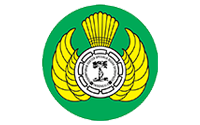Efficacy Comparison of Various Repair Techniques for Flexor Tendon Injuries: A Systematic Review and Meta-Analysis
Downloads
Background: Flexor tendon injuries are potentially disabling, as flexor tendons are essential to hand function, playing a vital role in all types of grip, including power and fine pinch grips. However, there has been no consensus regarding the most effective repair technique for this pathology.
Methods: A systematic search was conducted based on PRISMA guidelines to identify relevant studies through PubMed, Google Scholar, and Cochrane. A total of 9 studies (266 tendons from 108 patients) were included.
Results: In a comparison between the Modified Kessler and 4-stranded Cruciate techniques, the Four-stranded Cruciate Suture produces a higher 2 mm gap strength (I2 = 93%, p < 0.00001), higher ultimate strength (I2 = 99%, p = 0.02), and better Functional Outcome as measured using the Strickland Criteria (I2 = 0%, p < 0.0001). In a comparison between the 2-Stranded and the 4-Stranded Kessler technique, the 4-Stranded Kessler technique produces a higher 2 mm gap strength (I2= 98%, p =0.02) and higher ultimate strength (I2= 60%, p <0.00001).
Conclusion: The current systematic review and meta-analysis suggests that the 4-stranded cruciate repair technique has better strength and functional outcomes than the modified Kessler, especially in zone II and III injuries. The 4-stranded Kessler is also proven to have better strength compared to the 2-stranded Kessler.
Hill R and Chan S. Flexor tendon injuries: a review. Int Musculoskelet Med 2013;35(2): 72-9.
Tang JB. Indications for primary flexor tendon repair. Tendon surgery of the hand. Philadelphia, Elsevier Saunders. 2012 Apr 23:81-7.
Dy CJ, Daluiski A, Do HT, Hernandez-Soria A, Marx R, Lyman S. The epidemiology of reoperation after flexor tendon repair. J Hand Surg Am 2012 May 1;37(5):919-24.
de Jong JP, Nguyen JT, Sonnema AJ, Nguyen EC, Amadio PC, Moran SL. The incidence of acute traumatic tendon injuries in the hand and wrist: a 10-year population-based study. Clin Orthop Surg 2014 Jun;6(2):196.
Griffin M, Hindocha S, Jordan D, Saleh M, Khan W. An overview of the management of flexor tendon injuries. Open Orthop J 2012; 6(Suppl 1:M3): 28-35.
Navali AM, Rouhani A. Zone 2 Flexor Tendon Repair in Young Children: A Comparative Study of Four-Strand Versus Two-Strand Repair. J Hand Surg 2008;33(4):424-9.
Starnes T, Saunders RJ, Means Jr KR. Clinical outcomes of zone II flexor tendon repair depending on mechanism of injury. J Hand Surg Am 2012 Dec 1;37(12):2532-40.
Rudge WB, James M. Flexor tendon injuries in the hand: a UK survey of repair techniques and suture materials-are we following the evidence? Int Sch Res Notices 2014;2014:1-4.
Karjalainen T, He M, Chong AKS, Lim AYT, Ryhanen J. An analysis of the pull-out strength of 6 suture loop configurations in flexor tendons. J Hand Surg Am 2012; 37: 217–223.
Shaikh SA, Bawa A, Shahzad N, Yasmeen S, Beg MSA. Comparison of Modified Kessler Technique versus Four Strand Cruciate Technique for Repair of Long Flexor Tendons of Fingers: A Randomized Controlled Trial. Surg Med Open Access J 2018; 1: 1–4.
McLarney E, Hoffman H, Wolfe SW. Biomechanical analysis of the cruciate four-strand flexor tendon repair. J Hand Surg Am 1999 Mar;24(2):295-301.
Barrie KA, Wolfe SW, Shean C, Shenbagamurthi D, Slade JF, Panjabi MM. A biomechanical comparison of multistrand flexor tendon repairs using an in situ testing model. J Hand Surg Am 2000;25(3):499-506.
Waitayawinyu T, Martineau PA, Luria S, Hanel DP, Trumble TE. Comparative Biomechanic Study of Flexor Tendon Repair Using FiberWire. J Hand Surg 2008;33(5):701-8.
Dogramaci Y, Kalaci A, Sevinç TT, Esen E, Komurcu M, Yanat AN. Does strand configuration and number of purchase points affect the biomechanical behavior of a tendon repair? A biomechanical evaluation using different Kessler methods of flexor tendon repair. Hand 2008;3(3):266-70.
Yalçin L, Demirci MS, Alp M, Akkin SM, Şener B, Koebke J. Biomechanical assessment of suture techniques used for tendon repair. Acta Orthop Traumatol Turc 2011;45(6):453-7.
Dawood AA. Repair of Flexor Tendon Injuries by Four Strand Cruciate Technique Versus Two Strands Kessler Technique. J Clin Orthop Trauma 2020;11(4):646-649.
Farzad M, Layeghi F, Asgari A, Ring DC, Karimlou M, Hosseini SA. A prospective randomized controlled trial of controlled passive mobilization vs. place and active hold exercises after zone 2 flexor tendon repair. Hand Surg 2014;19(01):53-9.
Silfverskiöld KL, May EJ, Oden A. Factors affecting results after flexor tendon repair in zone II: a multivariate prospective analysis. J Hand Surg Am 1993 Jul 1;18(4):654-62.
Güntürk ÖB, Kayalar M, Kaplan I, Uludağ A, Özaksar K, Keleşoğlu B. Results of 4-strand modified Kessler core suture and epitendinous interlocking suture followed by modified Kleinert protocol for flexor tendon repairs in Zone 2. Acta Orthop Traumatol Turc 2018 Sep 1;52(5):382-6.
Copyright (c) 2021 JOINTS (Journal Orthopaedi and Traumatology Surabaya)

This work is licensed under a Creative Commons Attribution-NonCommercial-ShareAlike 4.0 International License.
- The author acknowledges that the copyright of the article is transferred to the Journal of Orthopaedi and Traumatology Surabaya (JOINTS), whilst the author retains the moral right to the publication.
- The legal formal aspect of journal publication accessibility refers to Creative Commons Attribution-Non Commercial-Share Alike 4.0 International License (CC BY-NC-SA).
- All published manuscripts, whether in print or electronic form, are open access for educational, research, library purposes, and non-commercial uses. In addition to the aims mentioned above, the editorial board is not liable for any potential violations of copyright laws.
- The form to submit the manuscript's authenticity and copyright statement can be downloaded here.
Journal of Orthopaedi and Traumatology Surabaya (JOINTS) is licensed under a Creative Commons Attribution-Non Commercial-Share Alike 4.0 International License.



























 Journal Orthopaedi and Traumatology Surabaya (JOINTS) (
Journal Orthopaedi and Traumatology Surabaya (JOINTS) (